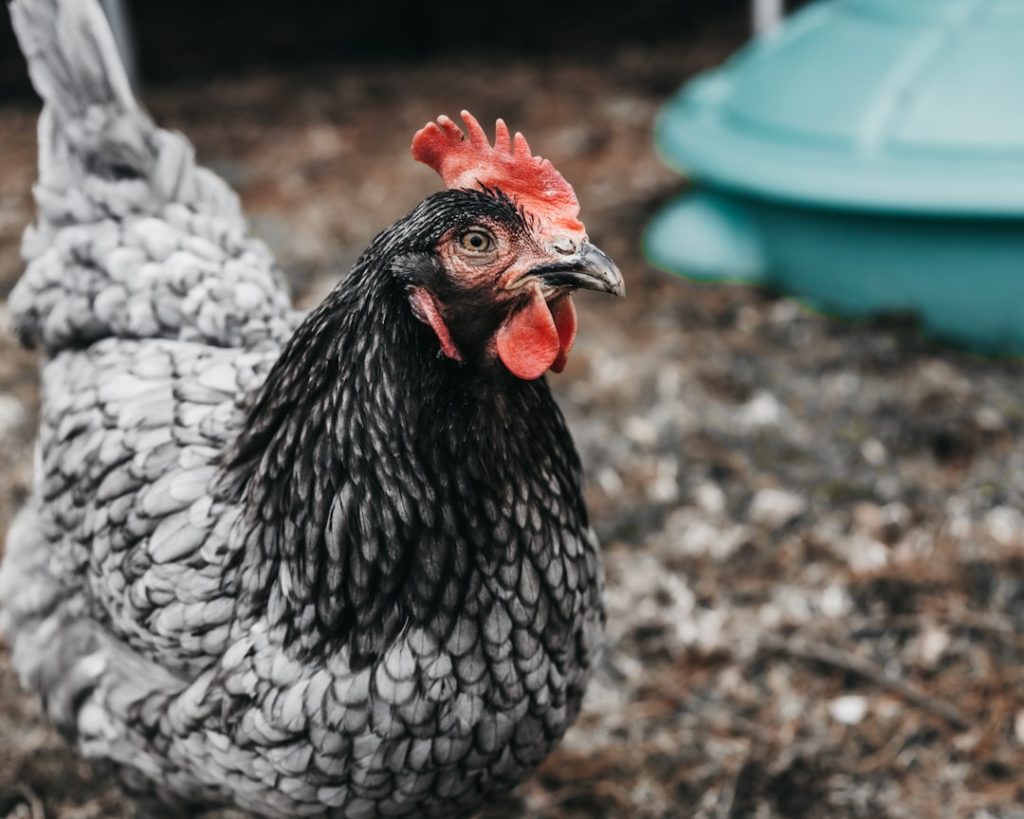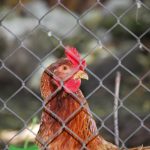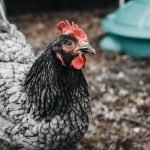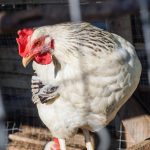Chickens exhibit complex social and mating behaviors that are essential for their reproduction and flock dynamics. Roosters display a strong mating drive and engage in courtship rituals to attract hens. These rituals often include a distinctive dance where the rooster puffs up his feathers, drops one wing, and circles the hen.
Hens may signal receptiveness by crouching and remaining still. The actual mating process is brief but can occur multiple times daily. For chicken owners, understanding these behaviors is crucial for proper flock management and ensuring the well-being of their birds.
Excessive mating can lead to stress, feather loss, and potential injuries in hens, highlighting the importance of providing an appropriate environment that balances natural mating behavior with hen welfare. The social hierarchy within a chicken flock, known as the pecking order, significantly influences mating behavior. Dominant roosters typically have preferential access to hens for mating, while subordinate roosters may have fewer opportunities.
This hierarchy can lead to competition and aggression among roosters, potentially disrupting flock harmony. Recognizing these social dynamics enables chicken keepers to manage their flocks more effectively and create a balanced environment for their birds.
Table of Contents
- 1 Providing enough space and distractions
- 2 Separating roosters from hens
- 3 Using temporary barriers or dividers
- 4 Adjusting the lighting in the coop
- 5 Introducing new hens gradually
- 6 Seeking advice from a poultry expert
- 7 FAQs
- 7.1 What are some methods to keep chickens from mating?
- 7.2 Why is it important to prevent chickens from mating?
- 7.3 Are there any natural methods to discourage mating behavior in chickens?
- 7.4 What are the benefits of using chicken saddles or aprons to prevent mating?
- 7.5 How can providing enough space and distractions in the coop help prevent mating?
Key Takeaways
- Chickens have complex mating behaviors that involve courtship, mating rituals, and establishing dominance within the flock.
- Providing enough space and distractions in the coop can help reduce aggression and stress among the chickens, leading to more harmonious mating behavior.
- Separating roosters from hens can help control mating behavior and prevent overbreeding, aggression, and injury among the flock.
- Using temporary barriers or dividers can help manage mating behavior by controlling access to certain areas of the coop or separating specific chickens.
- Adjusting the lighting in the coop can influence the mating behavior of chickens, as they are sensitive to changes in light and darkness.
- Introducing new hens gradually to the flock can help reduce aggression and competition among the chickens, leading to more successful mating behavior.
- Seeking advice from a poultry expert can provide valuable insights and guidance on managing mating behavior and maintaining a healthy flock.
Providing enough space and distractions
Providing Ample Space
One way to manage mating behavior in chickens is to provide enough space and distractions in the coop. Overcrowding can lead to increased stress and aggression among the birds, which can exacerbate mating behavior and lead to injuries. By ensuring that the coop has ample space for the chickens to move around freely, owners can reduce the likelihood of excessive mating and its associated problems.
Redirecting Attention with Distractions
In addition to space, providing distractions such as perches, toys, and environmental enrichment can help redirect the birds’ attention and energy away from constant mating. This can help reduce stress and boredom, which are common triggers for excessive mating behavior. By offering a stimulating environment, chicken owners can encourage natural behaviors such as foraging and exploring, which can help balance out the mating dynamics within the flock.
Creating a Dynamic Environment
Another way to provide distractions is by introducing new elements into the coop, such as rearranging the layout or adding new objects for the chickens to investigate. This can help break up any established patterns of behavior and reduce the focus on mating. By creating a dynamic and engaging environment, chicken owners can help their birds lead more fulfilling lives while also managing mating behavior more effectively.
Separating roosters from hens

In some cases, it may be necessary to separate roosters from hens to manage mating behavior. This can be particularly important if a rooster is overly aggressive or if there are too many roosters in relation to the number of hens in the flock. Separating roosters from hens can help reduce competition and aggression, as well as give hens a break from constant mating attempts.
When separating roosters from hens, it’s essential to provide each group with their own space, food, water, and shelter. This will ensure that both roosters and hens have a comfortable and safe environment while they are apart. It’s also important to monitor the behavior of both groups to ensure that they are adjusting well to the separation.
Separating roosters from hens can also be beneficial for breeding purposes. By keeping them apart until it’s time for breeding, chicken owners can control the timing and frequency of mating, which can help prevent over-mating and reduce stress on the hens. This approach allows for more intentional breeding practices while also promoting the well-being of the birds.
Using temporary barriers or dividers
Another method for managing mating behavior in chickens is to use temporary barriers or dividers within the coop. This can be particularly useful for creating separate areas for roosters and hens or for giving individual hens a break from persistent mating attempts. By using dividers, chicken owners can control the interactions between birds and create a more harmonious environment within the flock.
Temporary barriers or dividers can also be used to create breeding pens or areas where specific mating pairs can be housed together. This approach allows for more controlled breeding practices while also preventing over-mating and reducing stress on the hens. By creating designated spaces for mating, chicken owners can manage the dynamics within the flock more effectively and promote healthier breeding practices.
When using temporary barriers or dividers, it’s important to ensure that they are secure and do not pose any safety hazards for the birds. The barriers should also allow for adequate airflow and visibility so that the birds do not feel isolated or stressed. By implementing this method thoughtfully and with consideration for the birds’ well-being, chicken owners can effectively manage mating behavior while maintaining a positive environment for their flock.
Adjusting the lighting in the coop
The lighting conditions in the coop can have a significant impact on mating behavior in chickens. Natural light plays a crucial role in regulating the birds’ reproductive cycles, so adjusting the lighting in the coop can help manage mating behavior more effectively. By controlling the duration and intensity of light exposure, chicken owners can influence the birds’ hormonal activity and reduce excessive mating.
One approach is to provide supplemental lighting in the coop to extend the hours of daylight. This can mimic longer days and encourage hens to lay eggs more consistently, which can help reduce their receptivity to mating. By adjusting the lighting schedule, chicken owners can influence the birds’ reproductive patterns and minimize excessive mating behavior.
Conversely, reducing artificial light in the coop during the evening can help signal to the birds that it’s time to rest and reduce their activity levels. This can help prevent over-mating during nighttime hours and promote a more balanced reproductive cycle for the birds. By creating a natural lighting environment that aligns with the birds’ natural rhythms, chicken owners can help manage mating behavior more effectively while also supporting their overall well-being.
Introducing new hens gradually
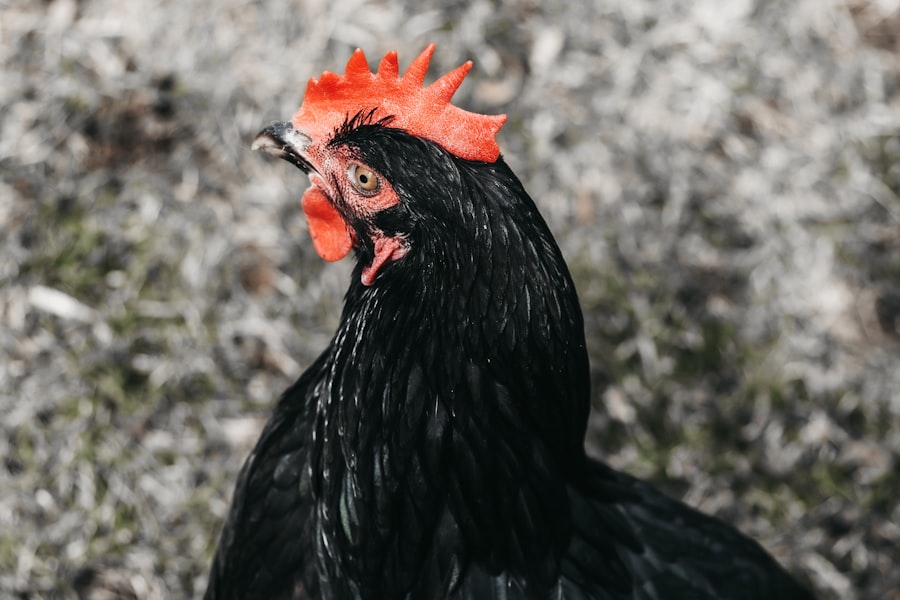
Gradual Introduction Reduces Stress and Aggression
By introducing new hens gradually, chicken owners can reduce stress and aggression within the flock while allowing for a smoother integration process. This approach helps to prevent conflicts and promotes a more peaceful coexistence among the birds.
Acclimation through Separate Enclosures
One effective method is to keep new hens in a separate enclosure within sight of the existing flock for a period of time before allowing them to mingle freely. This allows the birds to become familiar with each other’s presence without direct physical contact, which can help reduce aggressive behaviors when they are eventually introduced.
Strategic Timing for a Smooth Transition
Another method is to introduce new hens during times of low activity within the flock, such as during feeding or when they are engaged in other activities. This can help minimize confrontations and reduce competition for attention from roosters, which can lead to excessive mating attempts. By strategically timing the introductions, chicken owners can help manage mating behavior more effectively while promoting a smoother integration process for all birds involved.
Seeking advice from a poultry expert
When managing mating behavior in chickens, seeking advice from a poultry expert can provide valuable insights and guidance. Poultry experts have extensive knowledge of chicken behavior, breeding practices, and flock management techniques that can help chicken owners address specific challenges related to mating behavior effectively. A poultry expert can assess the unique dynamics within a flock and provide tailored recommendations for managing mating behavior based on individual circumstances.
Whether it’s addressing aggressive roosters, integrating new hens, or implementing environmental changes within the coop, a poultry expert can offer practical strategies that align with best practices in poultry management. In addition to providing advice on managing mating behavior, a poultry expert can also offer support in other areas of chicken care, such as nutrition, health maintenance, and breeding practices. Their expertise can help chicken owners create a holistic approach to managing their flock’s well-being while promoting healthy reproductive behaviors.
By seeking advice from a poultry expert, chicken owners can gain confidence in their ability to manage mating behavior effectively while also fostering a positive environment for their birds. Whether it’s through one-on-one consultations or attending workshops and seminars, engaging with poultry experts can empower chicken owners with valuable knowledge and resources that support their efforts in maintaining a thriving and harmonious flock. In conclusion, understanding and managing mating behavior in chickens requires careful observation, thoughtful interventions, and a holistic approach that considers both natural behaviors and individual flock dynamics.
By providing enough space and distractions, separating roosters from hens when necessary, using temporary barriers or dividers strategically, adjusting lighting conditions in the coop, introducing new hens gradually, and seeking advice from poultry experts, chicken owners can effectively manage mating behavior while promoting a balanced and harmonious environment for their flock. With these strategies in place, chicken owners can create a nurturing space where natural behaviors are encouraged while also ensuring the well-being of their birds.
If you’re looking for tips on how to keep chickens from mating, you might want to check out the article on poultrywizard.com. This website offers a wealth of information on raising chickens, including advice on coop design and management. Understanding the best practices for keeping chickens from mating can help you maintain a healthy and productive flock.
FAQs
What are some methods to keep chickens from mating?
Some methods to keep chickens from mating include separating roosters from hens, providing enough space and distractions in the coop, and using chicken saddles or aprons to protect the hens.
Why is it important to prevent chickens from mating?
Preventing chickens from mating can help control the population of chicks, reduce aggression and stress among the flock, and prevent potential injuries to the hens.
Are there any natural methods to discourage mating behavior in chickens?
Some natural methods to discourage mating behavior in chickens include providing plenty of nesting boxes, ensuring a balanced diet, and allowing the hens to free-range to reduce stress and aggression.
What are the benefits of using chicken saddles or aprons to prevent mating?
Chicken saddles or aprons can protect the hens’ backs from injuries and feather loss caused by mating, and can also help reduce the likelihood of mating by making it more difficult for the roosters to grip the hens.
How can providing enough space and distractions in the coop help prevent mating?
Providing enough space and distractions in the coop can help reduce stress and aggression among the flock, which in turn can decrease the likelihood of mating behavior. Additionally, distractions such as perches, toys, and hiding spots can keep the chickens occupied and less focused on mating.
Meet Walter, the feathered-friend fanatic of Florida! Nestled in the sunshine state, Walter struts through life with his feathered companions, clucking his way to happiness. With a coop that’s fancier than a five-star hotel, he’s the Don Juan of the chicken world. When he’s not teaching his hens to do the cha-cha, you’ll find him in a heated debate with his prized rooster, Sir Clucks-a-Lot. Walter’s poultry passion is no yolk; he’s the sunny-side-up guy you never knew you needed in your flock of friends!

